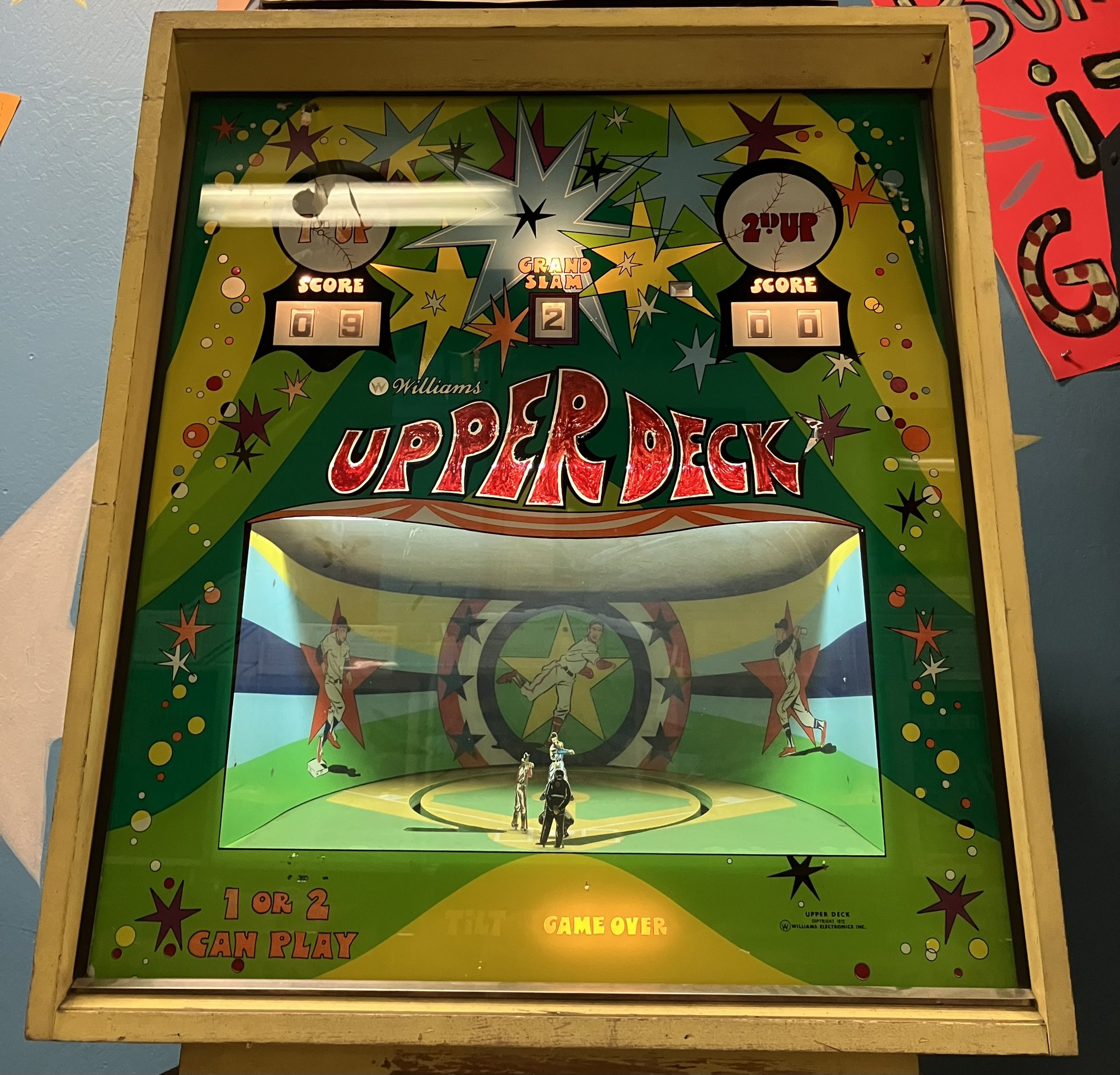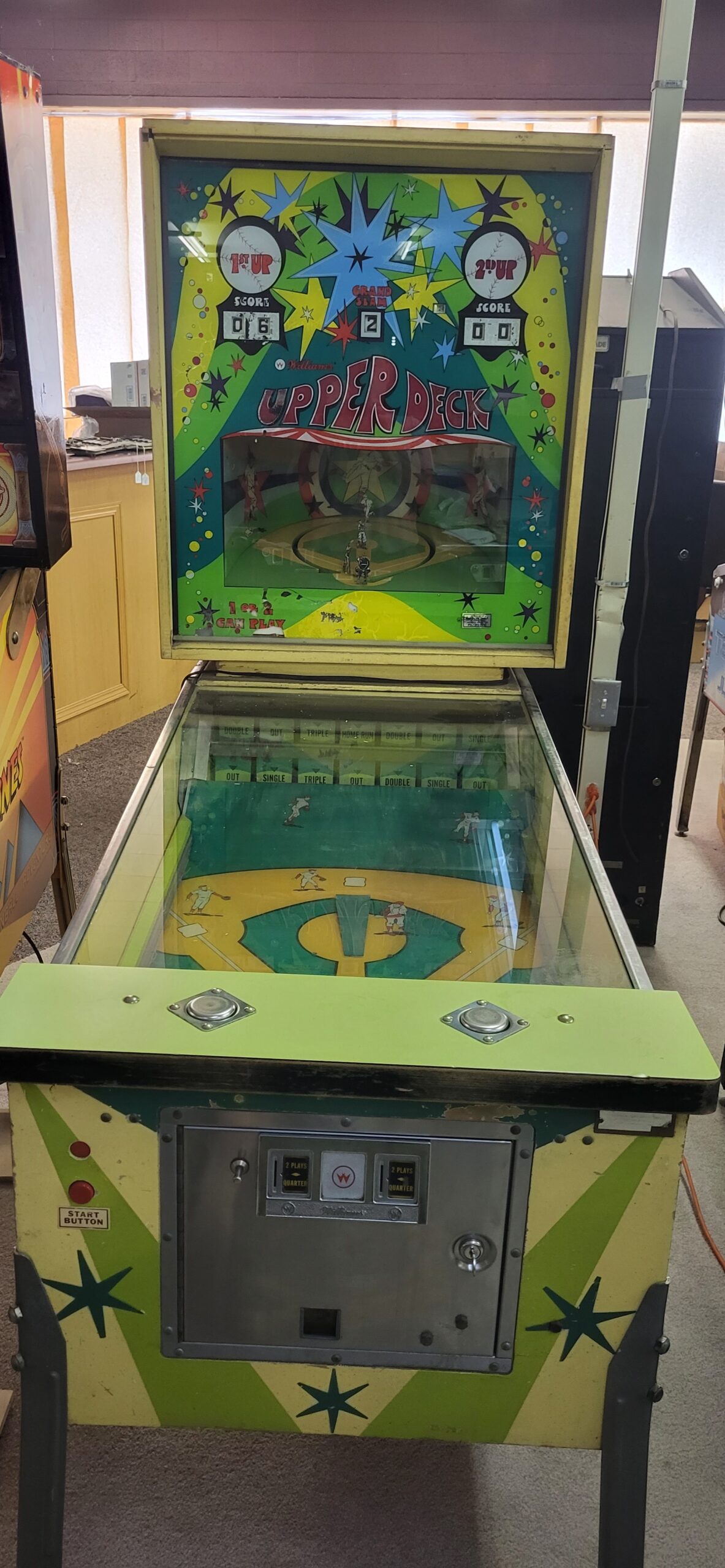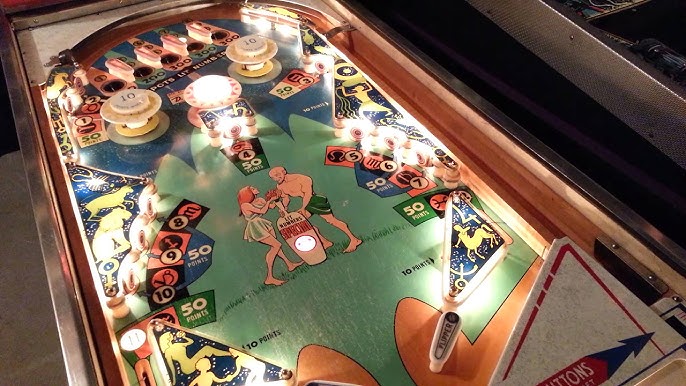
Upper Deck
Pinball / Williams 1975
Upper Deck is a baseball-themed pinball machine designed by Norm Clark and produced by Williams Electronics, released in June 1973. This electromechanical (EM) pinball game captures the essence of America’s favorite pastime with its engaging playfield, featuring vibrant baseball graphics, mechanical sounds, and a set of objectives centered around hitting targets that simulate playing a baseball game. The game aims to score points by hitting targets that represent different baseball plays, with the goal of advancing runners and scoring home runs.
Upper Deck was developed during the golden age of pinball, a time when Williams Electronics was a leading innovator in the pinball industry. Norm Clark, a prolific designer known for his contributions to many successful pinball machines, created Upper Deck to tap into the popularity of baseball. The game was introduced in an era when arcade and pinball machines were rapidly evolving, balancing mechanical ingenuity with the emerging influence of electronic components. The development of Upper Deck focused on combining traditional pinball gameplay with baseball’s strategic elements, making it a beloved game among pinball enthusiasts and sports fans alike.
Upon its release, Upper Deck received positive feedback for its thematic integration and gameplay mechanics. Players and arcade operators praised its engaging baseball theme, which was both entertaining and easy to understand. The game was noted for its ability to draw in players who were both pinball aficionados and baseball fans, making it a versatile addition to any arcade. Although it wasn’t the most commercially successful pinball machine of its time, Upper Deck has maintained a nostalgic appeal, appreciated for its unique theme and gameplay experience.
While Upper Deck did not spawn direct sequels or variations, it belongs to a genre of sports-themed pinball machines that were popular in the 1970s. Similar games by Williams and other manufacturers explored different sports, from soccer to basketball, each aiming to capture the respective sports’ excitement through pinball mechanics. Some related games from Williams include “Grand Slam” (1972) and “Line Drive” (1972), which also focused on baseball but with different gameplay and design approaches.
Upper Deck is considered a rare pinball machine today, with fewer than 3,000 units produced. Its scarcity has made it a sought-after item among collectors. The value of a well-maintained Upper Deck pinball machine can vary significantly based on its condition, originality, and working status. As of recent estimates, a fully restored Upper Deck can fetch between $2,000 and $4,000 at auction, with exceptional examples potentially reaching higher prices due to their historical significance and nostalgic value.
Upper Deck features traditional electromechanical components typical of pinball machines from the early 1970s. Below is a list of its relevant parts and hardware specifications:
Playfield: Baseball-themed artwork with targets, bumpers, and ramps.
Flippers: Two standard electromechanical flippers.
Pop Bumpers: Three pop bumpers to increase the ball’s speed and score.
Slingshots: Two slingshots on either side of the lower playfield.
Score Reels: Four mechanical score reels displaying players’ scores.
Rollover Switches: Various rollover switches to trigger plays and advance runners.
Targets: Drop targets and stationary targets simulating baseball plays.
Bell and Chimes: Mechanical sounds to enhance the baseball game experience.
Power Supply: Standard 110V AC power supply typical of EM pinball machines.
Cabinet: Sturdy wooden cabinet with baseball-themed decals.
Parts for Repairs:
Flipper coils and plunger assemblies
Pop bumper assemblies and skirts
Slingshot kickers and rubber rings
Score reel stepper units and switches
Light bulbs and sockets
Playfield glass and rubber rings
Mechanical switches and relays
Original or reproduction decals for cabinet restoration
Upper Deck remains a cherished piece of pinball history, capturing the spirit of both the sport and the era in which it was created. Its rarity and thematic appeal continue to make it a prized collectible among pinball enthusiasts.


